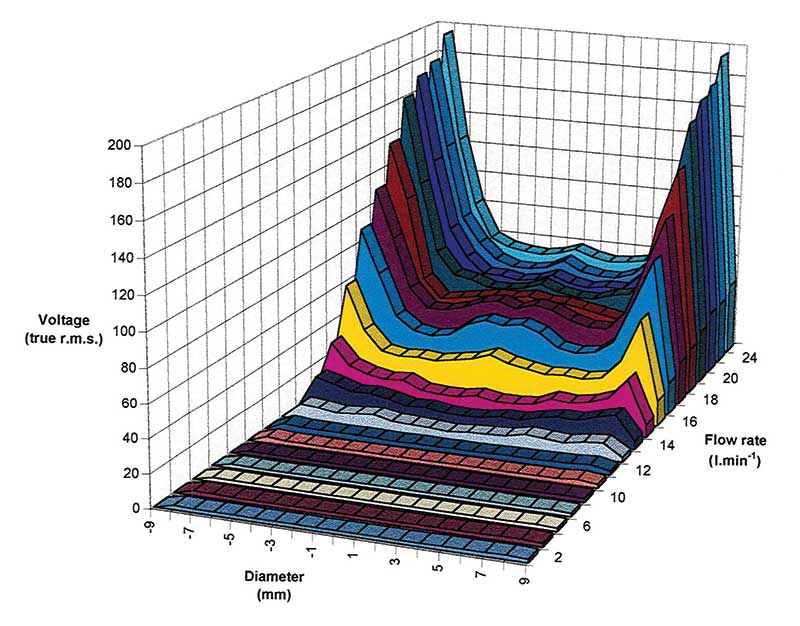Turbulence in corrugated tubing
When Dr Alastair Lack introduced his new eponymous breathing system, intended
to facilitate scavenging of expired gases and reduce operating theatre pollution [1],
it was compared inevitably and unfavourably with the existing widely-used Magill
system. It appeared to function well in practice, but reports were inconclusive [2].
Clinical observations suggested a difference in efficiency
demonstrated by minimum fresh gas flow requirements before
the onset of re-breathing, indicated by increasing tidal volume
or respiratory rate, in spontaneously-breathing patients during
general anaesthesia using a facemask. We found that the
minimum fresh gas flow rate required using the Lack system was
approximately 40% less, being mean 6.23 l.min
-1 in 183 patients
versus 8.32 l.min
-1 for the Magill system in the same patients.
Both are Mapleson A systems, but the geometry is different. In
the Magill circuit, expired gases mix with the fresh gas. In the
Lack co-axial system, end-expired gas vents directly into the
central tubing to the expiratory valve with little or no mixing
with fresh gas. But some unusual results led us to study flow
patterns in different tubing. We measured turbulence, assessed
by detecting the cooling effect of increased air movement over
a heat probe, over the cross-section of corrugated anaesthetic
tubing at gas flow rates between 2-30 l.min
-1 [3]. The smooth
walls of the Lack system generate little turbulence. In the corrugated tubing of the Magill system, however, the layers near
the boundary became increasingly disturbed as flow increases
(Figure 1). It is likely that this boundary layer turbulence
increases mixing of inspired and expired gas. This, together with
the position of the expiratory valve, adequately explains the
differences observed between these systems.
Michael R. Nott
Retired Consultant Anaesthetist
St Richard’s Hospital, Chichester
References
- Lack JA. Theatre pollution control. Anaesthesia 1976; 31:
259-62.
- Barnes PK, Seeley HF, Gothard JWW, Conway CM. The Lack
anaesthetic system. An assessment during spontaneous
breathing.
Anaesthesia 1976; 31: 1248-53.
- Nott MR, Mason J. Turbulence in the Magill and Lack
breathing systems.
Anaesthesia 1996; 51: 988-9.
Figure 1. Turbulence (expressed
as voltage [true r.m.s.]) across the
diameter of corrugated tubing, as
a function of increasing flow rate
plotted on z-axis.
